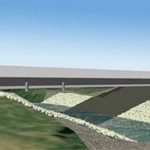While Iowa is one of the nation’s top food producers, people in some areas of the state don’t have easy access to fruits and vegetables. Courtney Pinard, a research scientist, says a study finds neighborhoods that lack access to healthy foods have obesity rates 52-percent higher than communities with ready access to fresh produce. “A lot of communities are considered what we call food deserts and that’s when the distance to the nearest full-service grocery store is more than a mile for urban areas and for rural areas, it’s ten miles,” according to Pinard.
Pinard, who works at the Gretchen Swanson Center for Nutrition in Omaha, says”Many communities, especially in Iowa, do have this challenge.” While many Iowans have large supermarkets nearby featuring well-stocked produce sections, she says not everyone is as fortunate. “They don’t really have access and for the majority of the population, the middle- to upper-income, they don’t really see that but, if you go into a store in a lower-income community, even the quality of the products might not be the same,” Pinard says. “The fresh fruits and vegetables just don’t even look that good.”
Efforts are underway to improve all Iowans’ access to five food categories: fruits, vegetables, lean meats, low-fat dairy and whole grains. Pinard says, “Moving forward, we’d like to have a national program to be able to support the type of work that we’re doing and also just to increase food access in our communities.”
The Farm Bill, which is still tied up in Congress, is expected to include funding for what’s called the Healthy Food Financing Initiative. The program promises to improve access to healthy food, bringing with it health benefits and revitalized communities by creating jobs and supporting small businesses.
(Radio Iowa)









